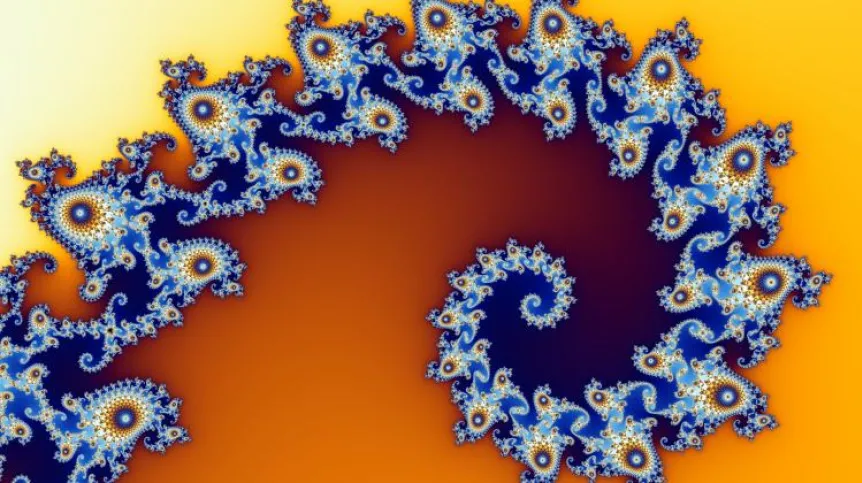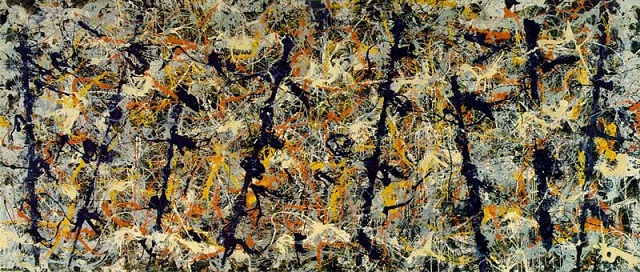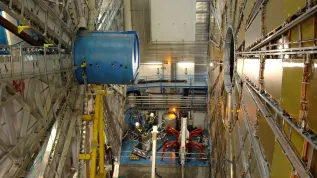
A fractal is an object, a fragment of which looks similar to the whole when enlarged. Fractal structures have already been discovered in proteins, mountain ridges, signal from the stock exchange, sunspots and even Jackson Pollock`s paintings. Prof. Paweł Oświęcimka talks about what physicists are looking for in fractals.
"The shape of a tree may seem quite random, but if I look at its fragment, for example a branch, I will see it resembles the whole tree. In an even greater magnification, a tiny twig on this large branch also looks like a tree. Despite apparent randomness, there is a certain order, hierarchy. And this is related to the fact that it is a fractal structure" - says Dr. Paweł Oświęcimka, a professor at the Institute of Nuclear Physics PAS in Kraków.

Fractal grasses, in which each twig looks like a smaller whole. Author: Solkoll, Wikipedia
The scientist explains that fractals are self-similar objects known from mathematics - their fragments resemble the whole. Fractality can be found in the structure of clouds, snowflakes, fjords, cauliflower, river flow intensity (how much water flows through a given volume in a given time), in the structure of proteins or in stock quotes. "The essence of fractality is tearing. Many objects that, for example, have jagged edges, have simple fractal structures" - the physicist says.
Fractals have already been used, for example, in the studies of heartbeat rhythm. "Where the structure of heart beats had the form of a well-developed fractal, the heart was usually healthy, while in the case of heart disease, the structure of heart beats was reduced" - the scientist says.
Research on fractals also finds applications in art, for example in computer graphics (fractal geometry has been used to generate landscapes for Star Trek or Star Wars). But it has also been discovered that fractality is incorporated, for example, into the paintings of Jackson Pollock, whose technique included splashing with paint. "His paintings were examined for self-similarity. It turned out that a fragment of a painting resembled the whole painting. Moreover, it turned out that the older Jackson Pollock was, the more dense the fractals in his paintings were - they filled the canvas to a larger extent" - notes Paweł Oświęcimka.

Blue Poles, 1952 by Jackson Pollock. Research shows that fractality is present in the artist`s paintings. Source: Wikipedia
Capturing the fractal nature of a phenomenon can facilitate the study of that phenomenon. "When I have a complicated system that consists of many elements, it is difficult to describe each element separately, but if I describe a small part of a fractal object, I more or less know how it will behave as a whole. This makes calculations easier" - explains Paweł Oświęcimka.
The team from the Institute of Nuclear Physics PAS is trying to identify fractals in nature`s signals, among other things. "When we show how a signal is built, we have a better chance to show the law behind this complexity, and then we are able to better describe the given system" - the scientist says.
Physicists from Kraków have already shown in their work that fractals are present in mountain ranges, the lengths of subsequent sentences in literature, in stock quotes.
They have also demonstrated that the variability of the number of sunspots, which is a reflection of solar activity, has a multifractal structure, and thus is a combination of many fractals. "We can see the heterogeneity in the structure of this fractal. Some fragments are slightly more complex than others" - the physicist says. Analysis of these fractals suggests that two different mechanisms are involved in the process of sunspot formation.
If we manage to "reverse engineer" a given multifractal and propose the system that will produce it, it will be a huge step towards understanding various processes that take place in nature.
The scientist says that an example of a multifractal is one of the most complex signals we know: the signal from stock exchange quotations. "At the first glance, the stock exchange signal seems to be random, but we can show dependencies in it. We show that there is an entanglement of many fractals" - he says.
When asked if quotes can be predicted once one understands stock exchange fractals, the physicist replies that, in his opinion, it is possible to some extent. "If we discover dependencies in stock exchange fractals, we can use them to look into the future" - he says. He adds that there are already methods based on fractals that allow to estimate the risk on the stock market. "They are not very popular because they require an advanced mathematical apparatus. Their commercial implementation is a long-term process, but it can be done" - he says.
The physicist explains that a great challenge in the analysis of multifractals is describing their individual components. Advanced methods are needed to analyse the fractals and their "entanglement". "We still do not know how nature makes single fractals into multifractal structures. It has to be well organized. When we try to put different fractals together, we can only damage them, while nature manages to maintain the hierarchy in them" - he says.
The team from the Institute of Nuclear Physics PAS is also working on new methods that could help in the identification of fractal structures. The researcher explains that his group has proposed one of the world`s best methods of fractal structure analysis. "If I want to describe the system, it is not enough to describe individual components of the system, I should also describe the relationships between them, and sometimes even these relationships have fractal features. We have shown that in our work" - he concludes.
PAP - Science in Poland, Ludwika Tomala
lt/ agt/ kap/
tr. RL













